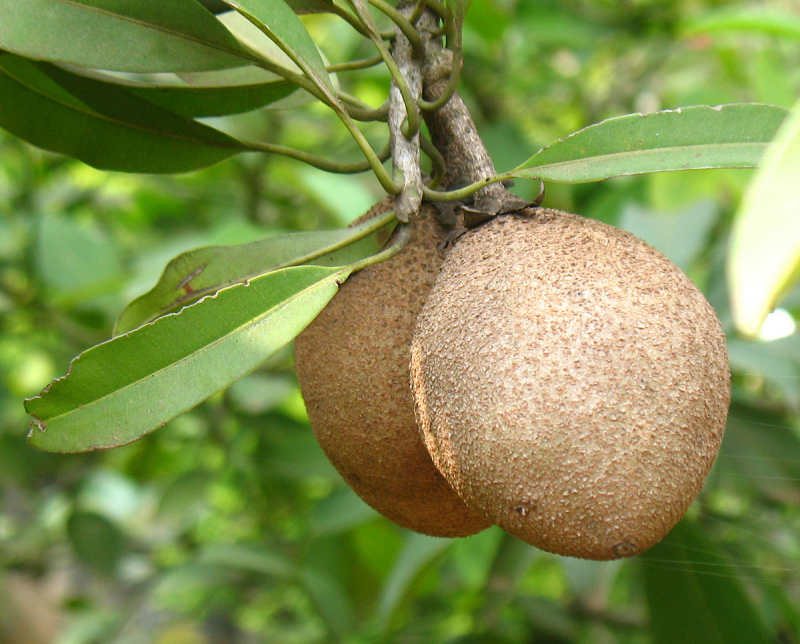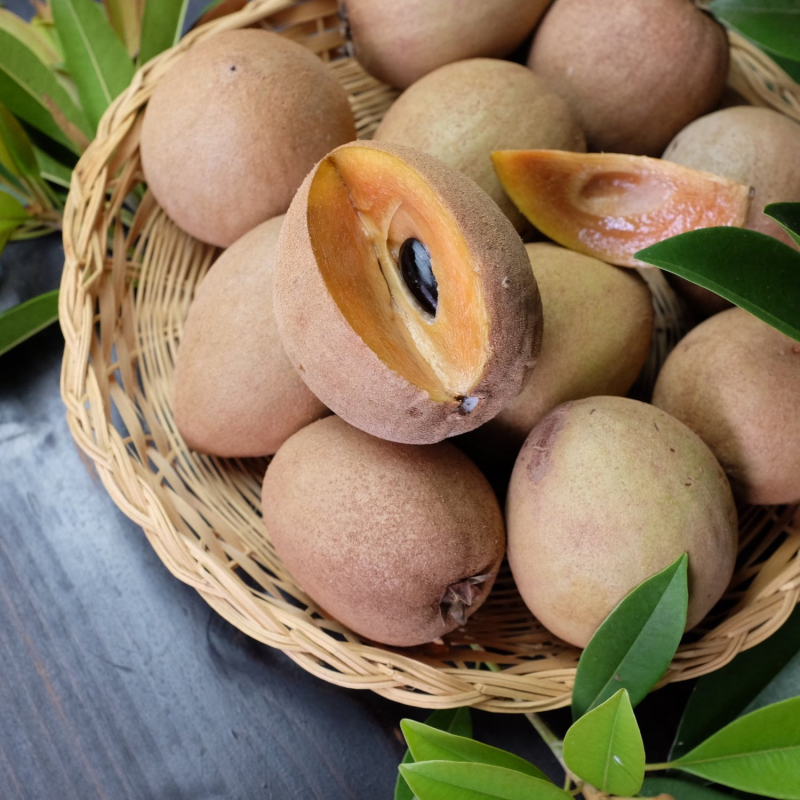Sapodilla
Manilkara zapota, commonly known as sapodilla, sapote, naseberry, nispero, or chicle, is a long-lived, evergreen tree native to southern Mexico, Central America, and the Caribbean. A natural instance of this can be found in the ecoregion of Petenes mangroves on the coast of Yucatán, where it is a subdominant plant species. During Spanish colonization, it was brought to the Philippines. It is grown in large quantities in Mexico and in tropical Asia including India, Pakistan, Thailand, Malaysia, Cambodia, Indonesia, Vietnam, and Bangladesh.
The fruit is a huge berry with a diameter of 4–8 cm. Its inside flesh has a feel similar to that of a well-ripened pear and can range in hue from pale yellow to earthy brown. There are one to six seeds in each fruit. The seeds are firm, glossy, and black, like beans, and they have a hook at one end that, if ingested, can get stuck in the throat. The fruit has a flavor that is particularly sweet and malty. The unripe fruit is firm to the touch and rich in saponin, which produces drying effects on the mouth due to its similar astringent characteristics to tannin. Only warm, mainly tropical settings are suitable for the trees to thrive; dying easily if the temperature drops below freezing.












